
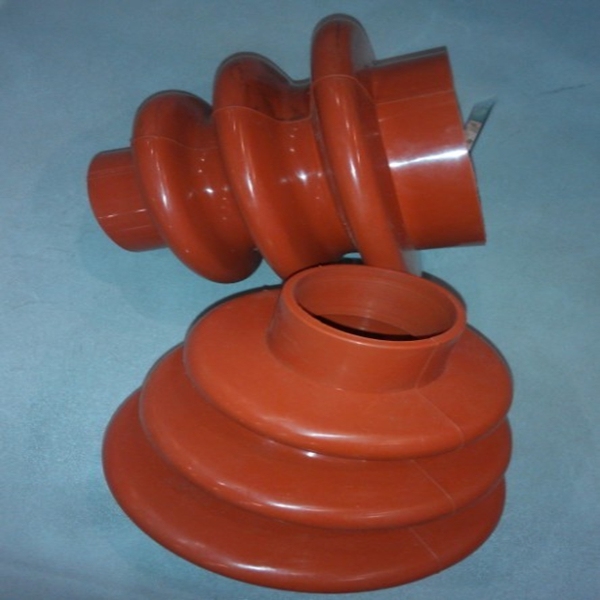
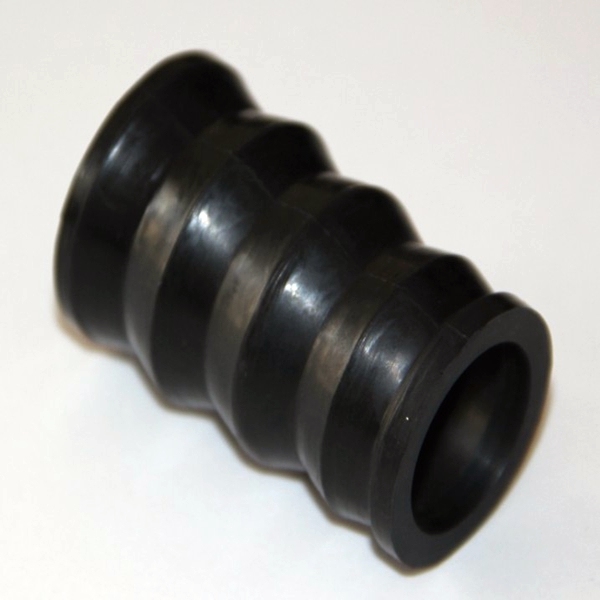
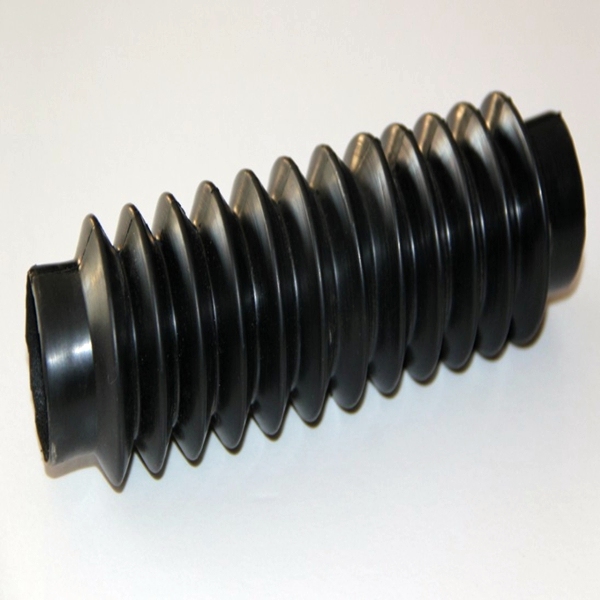
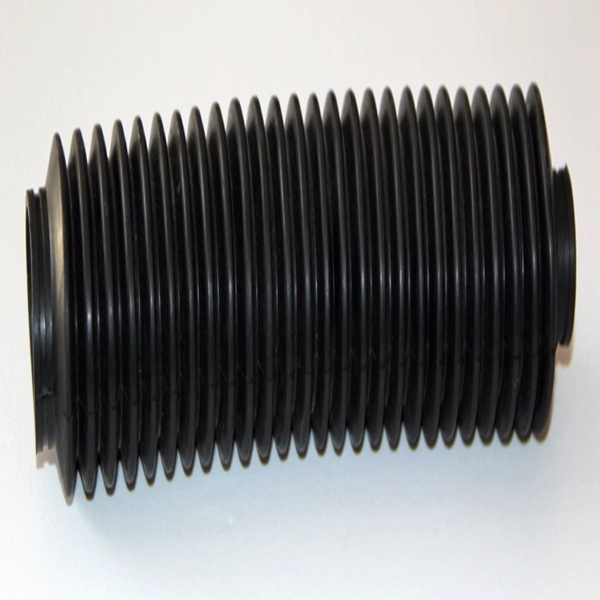
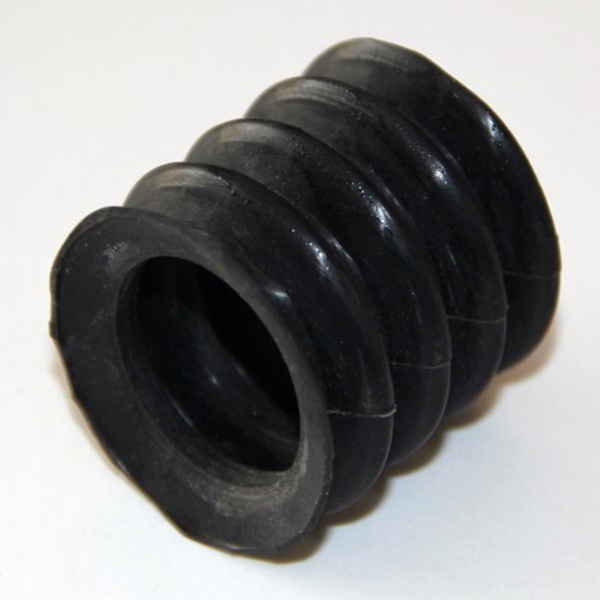 Features:
Features:This standard is the ideal  freely combined seal for reciprocating motion cylinder
Uses:
For high pressure hydraulic cylinder piston reciprocating motion of the piston rod seal
 Scope:
Metallurgy, mining, general equipment
 Material: NBR + fibre, or FKM+fibre
 Hardness: Hs98 ± 2A
 Operating temperature:  -40 ºC ~ + 120 ºC
 Working speed:<= 5m / s
 Working pressure:50 ~ 6Kgf / cm
<= 60Mpa
Working medium:
Hydraulic oil, emulsion, water and other
type: V rubber+cotton fibre,
material: mainly NBR, FKM
Type: one set/3 pcs, one set/5pcs, one set/7pcs.
     also can combination at will
We have thousands molds.
Â
| spec | spec | spec | spec | spec |
| 18*33 | 55*75 | 120*140 | 180*220 | 310*340 |
| 20*32 | 55*80 | 120*150 | 185*215 | 310*350 |
| 20*35 | 60*80Â | 125*140 | 190*220 | 320*360 |
| 22*38 | 60*85Â | 120*150 | 195*225 | 330*360 |
| 25*38 | 56*71 | 125*140 | 200*230 | 330*370 |
| 25*40 | 80*100 | 120*155 | 200*235 | 340*370 |
| 25*45 | 80*105 | 130*160 | 210*240 | 350*390 |
| 30*45 | 85*105 | 140*160 | 220*250 | 360*400 |
| 30*50 | 85*110 | 140*170 | 225*255 | 380*420 |
| 32*52 | 90*110 | 145*160 | 230*260 | 400*420 |
| 35*50 | 90*115 | 150*170 | 240*270 | 400*450 |
| 35*55 | 90*120 | 150*180 | 250*280 | 410*450 |
| 40*55 | 95*120 | 160*175 | 250*290 | 420*460 |
| 40*60 | 100*120 | 160*185 | 260*290 | 430*470 |
| 40*65 | 100*125 | 160*190 | 260*300 | 440*480 |
| 45*60 | 100*130 | 160*200 | 270*300 | 450*490 |
| 45*65 | 105*130 | 165*200 | 275*315 | 460*500 |
| 50*65 | 110*130 | 170*200 | 280*310 | 480*520 |
| 50*70 | 110*135 | 175*200 | 280*320 | 500*540 |
| 50*75 | 110*140 | 175*205 | 300*330 | 510*560 |
| 51*67 | 115*140 | 180*200 | 300*333 | 670*720 |
| 55*70 | 115*140 | 180*210 | 300*340 | 670*710 |
1. Natural rubber NR
(Natural Rubber) made from rubber tree latex collection is isoprene. It has good abrasion resistance, high elasticity, tensile strength and elongation. Easy to aging in the air, when heated, becomes sticky, easy expansion and dissolved in mineral oil or gasoline, acid and alkali but impatience. ? is the production of belts, hoses, rubber raw materials, and for the production of shock absorber parts, used in the liquid with a hydroxyl automotive brake oil, ethanol and other products.
2. SBR S B R
(Styrene Butadiene Copolyme) copolymer of butadiene and styrene, compared with natural rubber, uniform quality, less foreign body, but the mechanical strength is weak, can be blended with natural rubber use. Benefits: ? low-cost non-oil-resistant material ? good water resistance, hardness of 70 or less with good elasticity ? High hardness with poor compression distortion ? You can use most of the neutral and dry chemicals, nourishing properties Ketone shortcomings: ? Do not recommend the use of strong acids, ozone, oils, fats and oil esters and most of the hydrocarbons being. ? widely used in the tire industry, footwear,? Cloth industry and conveyor industries.
3. Butyl rubber IIR
(Butyl Rubber) polymerization of isobutylene with a minor amount isoprenes, retain a small amount of non-saturated base for cooperation with sulfur, steric hindrance due to the methyl group of molecules less movement than other polymers, so less gas permeation resistance, heat, sunlight, ozone resistance big, good electrical insulation; polar solvents such as alcohols, ketones, esters and other resistance large, the general temperature range of -54 ~ 110 ºC. Benefits: ? For most general gas impermeability ? with sunlight and with good resistance to ozone ? may be exposed to animal or vegetable oils or chemicals in the oxidizable shortcomings: ? Do not build justice and petroleum solvents, glue kerosene and aromatic hydrogen simultaneously. ? for the production of chemical resistance, vacuum equipment rubber parts.
The hydrogenated nitrile rubber HNBR
(Hydrogenate Nitrile) hydrogenated nitrile rubber of NBR rubber in part by the removal of the double-stranded after hydrogenation, after hydrogenation of its heat resistance, weather resistance than NBR to improve a lot, oil and general NBR rubber similar. General temperature range of -25 ~ 150 ºC. Benefits: ? relatively NBR rubber has resist tensile, tear and compression distortion characteristics with better abrasion resistance ? Excellent ? In ozone, sunlight and other atmospheric conditions with good resistance ? General cleaners drawback is suitable for laundry or dishwashing: ? Do not recommended for use in alcohols, esters, or aromatic solution into. ? air conditioning and refrigeration industry, widely used in environmentally friendly refrigerant R134a system seals. ? automobile engine system seals.
5. The ethylene-propylene rubber EPDM
(Ethylene propylene Rubber) by the polymerization of ethylene and propylene copolymer backbone substandard duplexes, so heat resistance, aging resistance, ozone resistance, stability are very good, but can not sulfur and sulfur. To solve this problem, the EP main chain into a small amount of a third component of double-stranded and can be sulfur and sulfur Serve EPDM, the general temperature range of -50 ~ 150 ºC. Polar solvents such as alcohols, ketones, glycol lipids, and phosphorylation excellent hydraulic fluid resistance. Benefits: ? With good weather resistance and anti-ozone resistance ? has excellent resistance to water and its resistance to chemicals ? Use of alcohols and ketones ? High temperature steam, with good gas impermeability shortcomings: ? Do not recommended for food use or being exposed to aromatic hydrogen. ? High temperature seal steam Environment. ? sanitary equipment seals or parts. ? Brake (Brake) system rubber parts. ? Radiator (Radiator) of seals.
7. neoprene CR
(Neoprene, Polychloroprene) polymerized from chlorine butene monomers. Vulcanized rubber elastic good wear resistance, are not afraid of direct exposure to the sun, there are particularly good resistance to atmospheric aging properties, are not afraid of the fierce twist, is not afraid of dichlorodifluoromethane and ammonia refrigerant, resistant to acid, resistance silicon ester lubricants, but the impatience of phosphate-based hydraulic oil. Easy to crystallize at low temperatures, hardening, poor storage stability, large expansion in low aniline point mineral oil. General temperature range of -50 ~ 150 ºC Advantages: ? good elasticity and a good compression set. ? the recipe does not contain sulfur, so it is easy to make ? Resistant to animal and vegetable characteristics ? will not neutral chemicals, fatty, fat, a variety of oils, solvents and affect the physical properties of a flame-retardant properties ? disadvantage: ? We do not recommend the use of a strong acid, nitro hydrocarbons, esters, ketones, chloroform and chemicals being. ? resistant seal R12 refrigerant. ? rubber parts or seals on appliances. ? suitable for the production of direct contact with the atmosphere, sunlight, ozone parts. ? Suitable for all kinds of fire, chemical resistant rubber products.
8. CSM CSM rubber
(Hypalon, Polyethylene) chlorosulfonated polyethylene synthetic rubber DuPont patents. Heat resistance, weather resistance, ozone resistance are good; also good acid resistance, oxidation resistance commonly used in medicines (nitric acid, sulfuric acid) of the Department, the general temperature range of -45 ~ 120 ºC. Benefits: ? ozone, oxidation and flame resistant ? have good physical properties and neoprene similar and have better acid resistance ? Excellent abrasion resistance ? NBR rubber and has the same low friction surface ? For Oil and a solvent resistance between NBR rubber and neoprene ? It is recommended to use the water to prevent leakage shortcomings: ? Do not recommend exposure to concentrated oxidizing acids, nitro hydrocarbons, esters, ketones and fragrant hydrogen .
9. The silicone rubber SI
(Silicone Rubber) silicone main chain composed of silicon (-si-o-si) from binding. It has excellent heat resistance, cold resistance, ozone resistance to atmospheric aging. It has good electrical insulation properties. Tensile strength than ordinary rubber poor and not having oil resistance. Benefits: ? After modulation formula tensile strength up to 1500PSI and tear resistance up 88LBS ? good flexibility and good compression distortion ? neutral solvent has good resistance with excellent heat resistance ? ? tool excellent cold resistance ? For ozone and oxides of erosion has excellent resistance ? Excellent electrical insulation properties ? insulation, heat dissipation. Disadvantages: ? Do not recommended for use in most concentrated solvents, oils , concentrated acid and sodium hydroxide after being diluted. ? household appliances industry used seal or rubber parts, such as electric kettle, electric iron, rubber parts inside the microwave oven. ? electronics industry seals or rubber parts, such as the phone keypad, DVD inside the cushion, the cable seal joints within the like. ? with the human body in contact with a seal on all kinds of products, such as water bottles, drinking fountains.
11. Viton FPM
Within (Fluoro Carbon Rubber) of molecular fluorine rubber, according to the fluorine content (ie monomeric building) and there are various types. Six lines of fluorinated FKM currently the most widely used first by the DuPont Company to "Viton" tradename listed. High temperature resistance than silicone rubber, has excellent chemical resistance, resistance to most oils and solvents (ketones, esters excluded), weather resistance and ozone resistance; cold is relatively poor, the general temperature range of -20 ~ 250 ºC. Specially formulated low temperature resistant to -40 ºC. Benefits: ? can heat to 250 ºC ? For most of the oil and solvent have the ability to resist, especially all the acids, aliphatic hydrocarbons, aromatic hydrocarbons and animal and vegetable oils shortcomings: ? Do not recommended for use in ketones, low molecular weight esters and containing nitrate mixture. ? automobiles, motorcycles, diesel engines and fuel systems. ? Chemical seals.
12. perfluororubber FFPM
(Perfluoroelastomer) Benefits: ? optimum heat resistance ? excellent chemical properties ? Low Outgassing characteristics ? Excellent anti Plasma characteristics of shortcomings: ? poor low temperature properties ? higher prices of raw materials ? production of high difficulty ? perfluorinated products widely used in the semiconductor industry and related industries in the use of information, the use range includes film manufacturing process of PVC, CVD and etching processes and a variety of high vacuum sealing process.
13. acrylate rubber ACM
(Polyacrylate Rubber) dominated by Alkyl Ester Acrylate polymerization of the elastomer composition, resistance to petrochemical oils, high temperature, weather resistance are good in mechanical strength, compression set and water resistance is less than the average oil plastic slightly difference. General temperature range of -25 ~ 170 ºC. Benefits: ? suitable for automotive transmission oil among ? with good resistance to oxidation and weather resistance ? Resistant to bending variant functions ? for oil has excellent resistance ? suitable for automotive transmission and power steering Among the shortcomings: ? Not for hot water among ? Not for brake fluid ? Among non-temperature-resistant feature is not available for phosphate among ? ? automobile transmission and powertrain seals.
14. Polyurethane PU
(Urethane Rubber) Polyurethane very good mechanical properties, high hardness, high elasticity, abrasion resistance are difficult compared to other rubber class; resistance to aging, ozone resistance, oil resistance is also quite good. General temperature range of -45 ~ 90 ºC. Benefits: ? abrasion resistance, high pressure shortcomings: ? Do not heat ? high pressure resistance, wear-resistant seals, such as hydraulic cylinder seals industry. ? high pressure and high charge system
Below IS about our products
| Material available | NBR, HNBR(H), HNBR(X), EPDM, NR,SBR, ACM,CFR,VMQ, CR,FKM(V), FFKM(K), PU, ECO,AFLAC |
| Mold | We can make mold by ourselves with competitive price, And if the quantity is up to 1000 pcs, the mold is for free. And more, for various oil seal, we have more than 10,000 molds in stock. |
| Size range | From 10mm to 2000mm Diameter  |
| Weight range of products | 5g to 20kg |
| Colors available | Red, orange, yellow, green, blue, gray, purple, brown, milk color |
| processing equipment | Rubber molding machines, rubber injection machines, extruding machines. |





 Features:
Features:This standard is the ideal  freely combined seal for reciprocating motion cylinder
Uses:
For high pressure hydraulic cylinder piston reciprocating motion of the piston rod seal
 Scope:
Metallurgy, mining, general equipment
 Material: NBR + fibre, or FKM+fibre
 Hardness: Hs98 ± 2A
 Operating temperature:  -40 ºC ~ + 120 ºC
 Working speed:<= 5m / s
 Working pressure:50 ~ 6Kgf / cm
<= 60Mpa
Working medium:
Hydraulic oil, emulsion, water and other
type: V rubber+cotton fibre,
material: mainly NBR, FKM
Type: one set/3 pcs, one set/5pcs, one set/7pcs.
     also can combination at will
We have thousands molds.
Â
| spec | spec | spec | spec | spec |
| 18*33 | 55*75 | 120*140 | 180*220 | 310*340 |
| 20*32 | 55*80 | 120*150 | 185*215 | 310*350 |
| 20*35 | 60*80Â | 125*140 | 190*220 | 320*360 |
| 22*38 | 60*85Â | 120*150 | 195*225 | 330*360 |
| 25*38 | 56*71 | 125*140 | 200*230 | 330*370 |
| 25*40 | 80*100 | 120*155 | 200*235 | 340*370 |
| 25*45 | 80*105 | 130*160 | 210*240 | 350*390 |
| 30*45 | 85*105 | 140*160 | 220*250 | 360*400 |
| 30*50 | 85*110 | 140*170 | 225*255 | 380*420 |
| 32*52 | 90*110 | 145*160 | 230*260 | 400*420 |
| 35*50 | 90*115 | 150*170 | 240*270 | 400*450 |
| 35*55 | 90*120 | 150*180 | 250*280 | 410*450 |
| 40*55 | 95*120 | 160*175 | 250*290 | 420*460 |
| 40*60 | 100*120 | 160*185 | 260*290 | 430*470 |
| 40*65 | 100*125 | 160*190 | 260*300 | 440*480 |
| 45*60 | 100*130 | 160*200 | 270*300 | 450*490 |
| 45*65 | 105*130 | 165*200 | 275*315 | 460*500 |
| 50*65 | 110*130 | 170*200 | 280*310 | 480*520 |
| 50*70 | 110*135 | 175*200 | 280*320 | 500*540 |
| 50*75 | 110*140 | 175*205 | 300*330 | 510*560 |
| 51*67 | 115*140 | 180*200 | 300*333 | 670*720 |
| 55*70 | 115*140 | 180*210 | 300*340 | 670*710 |
1. Natural rubber NR
(Natural Rubber) made from rubber tree latex collection is isoprene. It has good abrasion resistance, high elasticity, tensile strength and elongation. Easy to aging in the air, when heated, becomes sticky, easy expansion and dissolved in mineral oil or gasoline, acid and alkali but impatience. ? is the production of belts, hoses, rubber raw materials, and for the production of shock absorber parts, used in the liquid with a hydroxyl automotive brake oil, ethanol and other products.
2. SBR S B R
(Styrene Butadiene Copolyme) copolymer of butadiene and styrene, compared with natural rubber, uniform quality, less foreign body, but the mechanical strength is weak, can be blended with natural rubber use. Benefits: ? low-cost non-oil-resistant material ? good water resistance, hardness of 70 or less with good elasticity ? High hardness with poor compression distortion ? You can use most of the neutral and dry chemicals, nourishing properties Ketone shortcomings: ? Do not recommend the use of strong acids, ozone, oils, fats and oil esters and most of the hydrocarbons being. ? widely used in the tire industry, footwear,? Cloth industry and conveyor industries.
3. Butyl rubber IIR
(Butyl Rubber) polymerization of isobutylene with a minor amount isoprenes, retain a small amount of non-saturated base for cooperation with sulfur, steric hindrance due to the methyl group of molecules less movement than other polymers, so less gas permeation resistance, heat, sunlight, ozone resistance big, good electrical insulation; polar solvents such as alcohols, ketones, esters and other resistance large, the general temperature range of -54 ~ 110 ºC. Benefits: ? For most general gas impermeability ? with sunlight and with good resistance to ozone ? may be exposed to animal or vegetable oils or chemicals in the oxidizable shortcomings: ? Do not build justice and petroleum solvents, glue kerosene and aromatic hydrogen simultaneously. ? for the production of chemical resistance, vacuum equipment rubber parts.
The hydrogenated nitrile rubber HNBR
(Hydrogenate Nitrile) hydrogenated nitrile rubber of NBR rubber in part by the removal of the double-stranded after hydrogenation, after hydrogenation of its heat resistance, weather resistance than NBR to improve a lot, oil and general NBR rubber similar. General temperature range of -25 ~ 150 ºC. Benefits: ? relatively NBR rubber has resist tensile, tear and compression distortion characteristics with better abrasion resistance ? Excellent ? In ozone, sunlight and other atmospheric conditions with good resistance ? General cleaners drawback is suitable for laundry or dishwashing: ? Do not recommended for use in alcohols, esters, or aromatic solution into. ? air conditioning and refrigeration industry, widely used in environmentally friendly refrigerant R134a system seals. ? automobile engine system seals.
5. The ethylene-propylene rubber EPDM
(Ethylene propylene Rubber) by the polymerization of ethylene and propylene copolymer backbone substandard duplexes, so heat resistance, aging resistance, ozone resistance, stability are very good, but can not sulfur and sulfur. To solve this problem, the EP main chain into a small amount of a third component of double-stranded and can be sulfur and sulfur Serve EPDM, the general temperature range of -50 ~ 150 ºC. Polar solvents such as alcohols, ketones, glycol lipids, and phosphorylation excellent hydraulic fluid resistance. Benefits: ? With good weather resistance and anti-ozone resistance ? has excellent resistance to water and its resistance to chemicals ? Use of alcohols and ketones ? High temperature steam, with good gas impermeability shortcomings: ? Do not recommended for food use or being exposed to aromatic hydrogen. ? High temperature seal steam Environment. ? sanitary equipment seals or parts. ? Brake (Brake) system rubber parts. ? Radiator (Radiator) of seals.
7. neoprene CR
(Neoprene, Polychloroprene) polymerized from chlorine butene monomers. Vulcanized rubber elastic good wear resistance, are not afraid of direct exposure to the sun, there are particularly good resistance to atmospheric aging properties, are not afraid of the fierce twist, is not afraid of dichlorodifluoromethane and ammonia refrigerant, resistant to acid, resistance silicon ester lubricants, but the impatience of phosphate-based hydraulic oil. Easy to crystallize at low temperatures, hardening, poor storage stability, large expansion in low aniline point mineral oil. General temperature range of -50 ~ 150 ºC Advantages: ? good elasticity and a good compression set. ? the recipe does not contain sulfur, so it is easy to make ? Resistant to animal and vegetable characteristics ? will not neutral chemicals, fatty, fat, a variety of oils, solvents and affect the physical properties of a flame-retardant properties ? disadvantage: ? We do not recommend the use of a strong acid, nitro hydrocarbons, esters, ketones, chloroform and chemicals being. ? resistant seal R12 refrigerant. ? rubber parts or seals on appliances. ? suitable for the production of direct contact with the atmosphere, sunlight, ozone parts. ? Suitable for all kinds of fire, chemical resistant rubber products.
8. CSM CSM rubber
(Hypalon, Polyethylene) chlorosulfonated polyethylene synthetic rubber DuPont patents. Heat resistance, weather resistance, ozone resistance are good; also good acid resistance, oxidation resistance commonly used in medicines (nitric acid, sulfuric acid) of the Department, the general temperature range of -45 ~ 120 ºC. Benefits: ? ozone, oxidation and flame resistant ? have good physical properties and neoprene similar and have better acid resistance ? Excellent abrasion resistance ? NBR rubber and has the same low friction surface ? For Oil and a solvent resistance between NBR rubber and neoprene ? It is recommended to use the water to prevent leakage shortcomings: ? Do not recommend exposure to concentrated oxidizing acids, nitro hydrocarbons, esters, ketones and fragrant hydrogen .
9. The silicone rubber SI
(Silicone Rubber) silicone main chain composed of silicon (-si-o-si) from binding. It has excellent heat resistance, cold resistance, ozone resistance to atmospheric aging. It has good electrical insulation properties. Tensile strength than ordinary rubber poor and not having oil resistance. Benefits: ? After modulation formula tensile strength up to 1500PSI and tear resistance up 88LBS ? good flexibility and good compression distortion ? neutral solvent has good resistance with excellent heat resistance ? ? tool excellent cold resistance ? For ozone and oxides of erosion has excellent resistance ? Excellent electrical insulation properties ? insulation, heat dissipation. Disadvantages: ? Do not recommended for use in most concentrated solvents, oils , concentrated acid and sodium hydroxide after being diluted. ? household appliances industry used seal or rubber parts, such as electric kettle, electric iron, rubber parts inside the microwave oven. ? electronics industry seals or rubber parts, such as the phone keypad, DVD inside the cushion, the cable seal joints within the like. ? with the human body in contact with a seal on all kinds of products, such as water bottles, drinking fountains.
11. Viton FPM
Within (Fluoro Carbon Rubber) of molecular fluorine rubber, according to the fluorine content (ie monomeric building) and there are various types. Six lines of fluorinated FKM currently the most widely used first by the DuPont Company to "Viton" tradename listed. High temperature resistance than silicone rubber, has excellent chemical resistance, resistance to most oils and solvents (ketones, esters excluded), weather resistance and ozone resistance; cold is relatively poor, the general temperature range of -20 ~ 250 ºC. Specially formulated low temperature resistant to -40 ºC. Benefits: ? can heat to 250 ºC ? For most of the oil and solvent have the ability to resist, especially all the acids, aliphatic hydrocarbons, aromatic hydrocarbons and animal and vegetable oils shortcomings: ? Do not recommended for use in ketones, low molecular weight esters and containing nitrate mixture. ? automobiles, motorcycles, diesel engines and fuel systems. ? Chemical seals.
12. perfluororubber FFPM
(Perfluoroelastomer) Benefits: ? optimum heat resistance ? excellent chemical properties ? Low Outgassing characteristics ? Excellent anti Plasma characteristics of shortcomings: ? poor low temperature properties ? higher prices of raw materials ? production of high difficulty ? perfluorinated products widely used in the semiconductor industry and related industries in the use of information, the use range includes film manufacturing process of PVC, CVD and etching processes and a variety of high vacuum sealing process.
13. acrylate rubber ACM
(Polyacrylate Rubber) dominated by Alkyl Ester Acrylate polymerization of the elastomer composition, resistance to petrochemical oils, high temperature, weather resistance are good in mechanical strength, compression set and water resistance is less than the average oil plastic slightly difference. General temperature range of -25 ~ 170 ºC. Benefits: ? suitable for automotive transmission oil among ? with good resistance to oxidation and weather resistance ? Resistant to bending variant functions ? for oil has excellent resistance ? suitable for automotive transmission and power steering Among the shortcomings: ? Not for hot water among ? Not for brake fluid ? Among non-temperature-resistant feature is not available for phosphate among ? ? automobile transmission and powertrain seals.
14. Polyurethane PU
(Urethane Rubber) Polyurethane very good mechanical properties, high hardness, high elasticity, abrasion resistance are difficult compared to other rubber class; resistance to aging, ozone resistance, oil resistance is also quite good. General temperature range of -45 ~ 90 ºC. Benefits: ? abrasion resistance, high pressure shortcomings: ? Do not heat ? high pressure resistance, wear-resistant seals, such as hydraulic cylinder seals industry. ? high pressure and high charge system
Below IS about our products
| Material available | NBR, HNBR(H), HNBR(X), EPDM, NR,SBR, ACM,CFR,VMQ, CR,FKM(V), FFKM(K), PU, ECO,AFLAC |
| Mold | We can make mold by ourselves with competitive price, And if the quantity is up to 1000 pcs, the mold is for free. And more, for various oil seal, we have more than 10,000 molds in stock. |
| Size range | From 10mm to 2000mm Diameter  |
| Weight range of products | 5g to 20kg |
| Colors available | Red, orange, yellow, green, blue, gray, purple, brown, milk color |
| processing equipment | Rubber molding machines, rubber injection machines, extruding machines. |
ThyssenKrupp Elevator Spare Parts
ThyssenKrupp Elevator Spare Parts, ThyssenKrupp Elevator Parts, ThyssenKrupp Lift Spare Parts, ThyssenKrupp Lift Parts
ThyssenKrupp Elevator AG
The Elevator Technology business area brings together the ThyssenKrupp Group's global activities in passenger transportation systems. With sales of 7.2 billion euros in fiscal 2013/2014 and customers in 150 countries, ThyssenKrupp Elevator is one of the world's leading elevator companies. With about 50,000 skilled employees, the company offers innovative and energy-efficient products designed to meet customers` individual requirements.
The portfolio includes passenger and freight elevators, escalators and moving walks, passenger boarding bridges, stair and platform lifts as well as tailored service solutions for all products. 900 locations around the world provide an extensive sales and service network to guarantee closeness to customers.
The business is organized in five operating units, four of which concentrate on the regional elevator business (Central/Eastern/ Northern Europe, Southern Europe/Africa/Middle East, Americas and Asia/Pacific). The other one, which operates globally, is: Access solutions (passenger boarding bridges/chair, service and platform lifts, as well as home elevators).
ThyssenKrupp Elevator Asia Pacific
ThyssenKrupp Elevator Asia Pacific is active in the Asia Pacific market with a dense network of branches and offices offering new installation, modernization and service business for the complete product range.
Our manufacturing factories are located in the following areas:
- Songjiang Elevator Plant in Shanghai, China
- Zhongshan Elevator Plant in Guangdong, China
- Cheonan Elevator Plant, Korea
- Zhongshan Escalator and Passenger Boarding Bridge Plant in Guangdong, China
- Access Plant in Shanghai, China
ThyssenKrupp Elevator (China)
ThyssenKrupp Elevator entered China market in 1995. As the fast development of business and production, we have about 10,000 staffs and four factories over the country. We provide elevators, escalators, moving walks, passenger boarding bridges, and accessibility lifts.
ThyssenKrupp Elevator (China) offer installation, modernization and service to all product series, depending on branches, office network, local factories and International Technical Services (ITS). Our goal is to be an efficient elevator solution provider to fit different uses and demands. Anywhere, anytime. More...
ThyssenKrupp AG in brief
ThyssenKrupp has 155,000 employees in around 80 countries work with passion and expertise to develop solutions for sustainable progress. Their skills and commitment are the basis of our success. In fiscal year 2013/2014 ThyssenKrupp generated sales of €43 billion.
Innovations and technical progress are key factors in managing global growth and using finite resources in a sustainable way. With our engineering expertise in the areas of "Material", "Mechanical" and "Plant", we enable our customers to gain an edge in the global market and manufacture innovative products in a cost and resource efficient way.
ThyssenKrupp Elevator Spare Parts, ThyssenKrupp Elevator Parts, ThyssenKrupp Lift Spare Parts, ThyssenKrupp Lift Parts
CEP Elevator Products ( China ) Co., Ltd. , https://www.zjsmartcommercialescalators.com